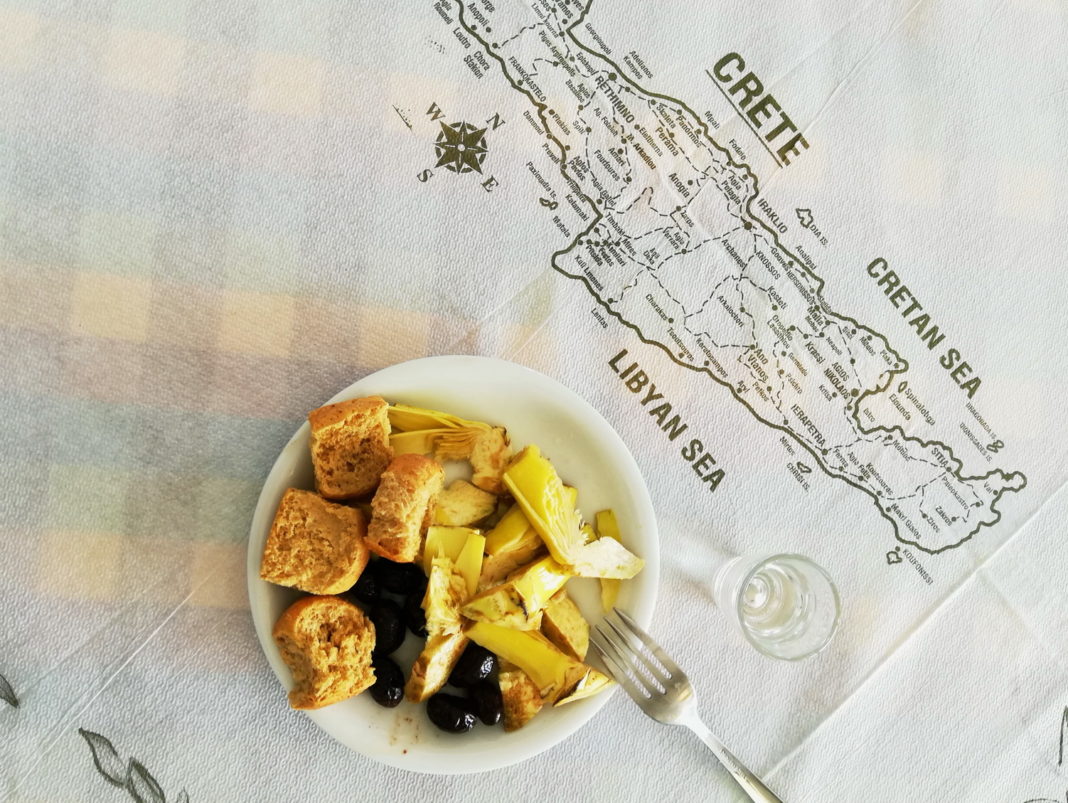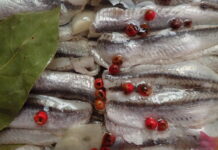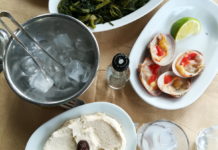Even those who know and love Greek food are surprised to discover the many uniquely Cretan food specialties. This largest of the Greek Islands has a distinctive cuisine all its own. Traditional Cretan cuisine is the elemental expression of the landscape itself- fragrant, wild, and delicious. Food in Crete is close to the land and to the seasons – it is honest cuisine. Cretan food recipes feature local ingredients – even wild ingredients – at their peak. The soil here is generous. Sometimes the best food in Crete is the very simplest food.
The Cretan diet is not only delicious but also wholesome. It has all of the health benefits of the Mediterranean diet, rich in extra-virgin olive oil, whole grains, and wild greens. It’s also one of the most distinctive and delicious cuisines of Greece.
Here are some Cretan food specialties to enjoy on your visit.
Table of Contents
Cretan Cheeses – Pichtogalo and Graviera
The soft goat’s cheese of Crete, which is similar to a creamy of chevre – has a PDO. It’s name is “Pichtogalo” – “Thick milk,” and it’s as common to Crete as feta cheese is in the rest of Greece. Pichtogalo Chanion – pictogalo of Chania – is a PDO cheese. Similar fresh goats’ milk cheeses in Crete go by the name myzithra. This delicious cheese comes in salads with tomato, barley rusks, purslane, cucumbers, and earthy-tasting leathery black olives. It’s also the essential component of several specialties, like boureki.
Cretan graviera cheese is a semi hard cheese in a wheel. Rich in flavor, it can range from milky and milder to sharp. This is a fantastic cheese for eating just as it is, maybe with a drizzle of Cretan honey. It also melts beautifully, for a saganaki. Kefalograviera – a slightly harder, aged graviera, is delicious grated over hilopites – home-style noodles.
Cretan Goat
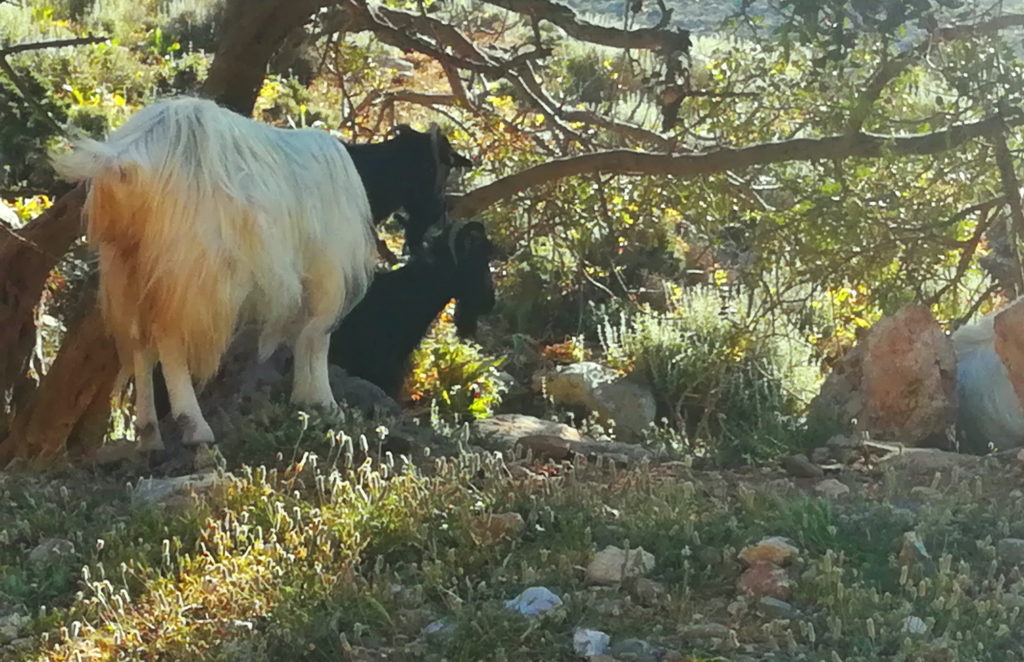
The mysterious, noble goat is the animal of Crete. Independent in spirit, these intrepid climbers boldly explore the rugged terrain. Along the way, they graze on fragrant wild herbs like thyme and marjoram. Their meat is lean, and rich with the scent of the landscape itself.
Goat is eaten many ways. Grilled goat chops will have you licking the bones and your fingers. The curiously named “antixristo” is goat grilled slowly across from the hot coals until it is lacquered with fat and flavor, falling apart into succulent hunks of meat.
“Gamopilafo” – or “Wedding Pilaf” is the main dish of all traditional weddings. For this plain-looking but most delicious of Cretan dishes, goat is boiled in enormous cauldrons. Because it is so essential for a wedding feast, each village has a set of community cauldrons for the purpose, because a village wedding can have a thousand guests or even many more. The tender goat meat is removed to platters and served alongside rice made with the fragrant broth, topped with “stakovoutiro” – a rich butter from the cream of goat’s – or sometimes sheep’s – milk.
Staka- A Rich Cretan Specialty Food
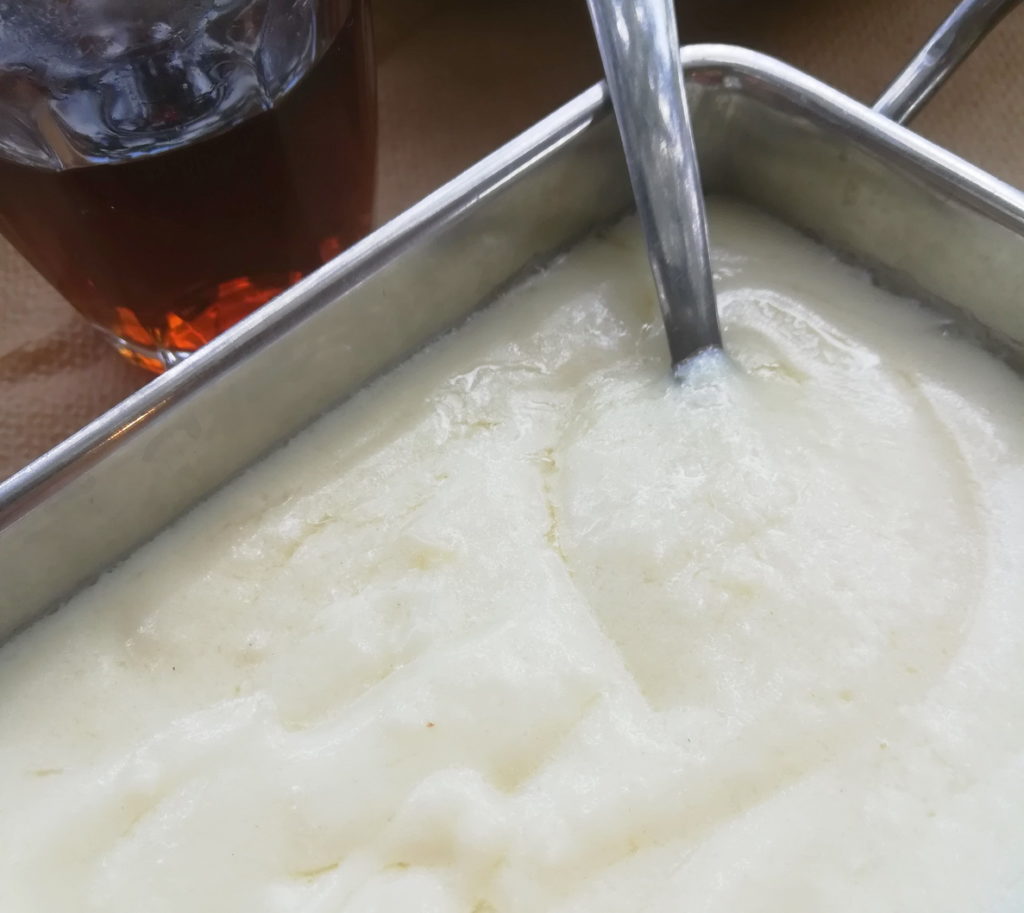
Clean tasting, pure white goats’ or sheep’s milk is rich with cream. The top cream – much like a clotted cream – is thick like cream cheese or soft butter. The cream is simmered until it melts. Then you add some flour to thicken, a shot glass of water, and salt to taste. Whisk it until it thickens to the consistency of a pudding, and serve it hot. This is Cretan staka – it’s like a lusty fondue. Shockingly, most people eat the thickened butter with fresh-cut French fries – the classic Cretan staka recipe. You can also dip crusts of bread in it.
Staka is a natural match for eggs. In western Crete, eggs are fried in the clarified butter of staka and served alongside the creamy staka. In eastern Crete, melted staka and eggs make a buttery, crisp omelet.
Paximadia- Cretan Barley Rusks
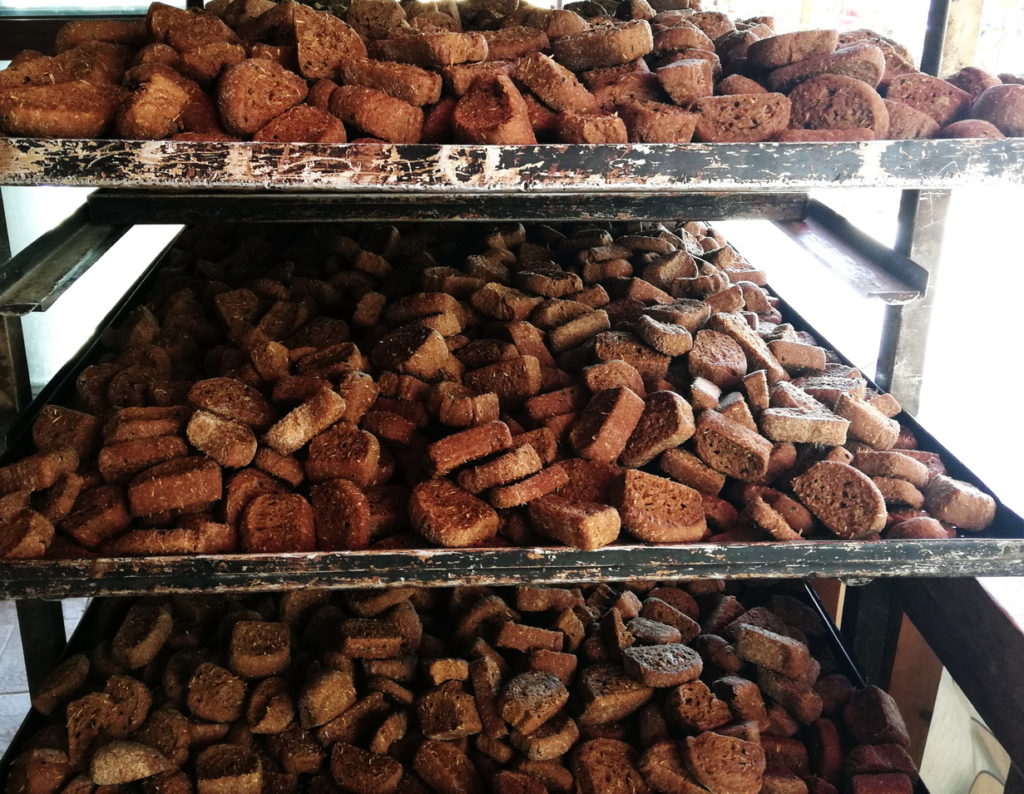
Twice baked hearty Cretan barley rusks are full of flavor and keep plenty of texture, even when softened with sweet grated tomatoes, like in dakos.
Cretan barley rusks are an essential component of the Cretan salad. This is the Cretan version of a Greek salad. It has the same tomato and cucumber base, with the essential additions of Cretan olives, rusks, and pichtoogalo instead of feta cheese. It is a heartier and more satisfying salad – you can serve it as a light Cretan lunch on a hot day.
“Dakos” – The best-known of Cretan Food Specialties
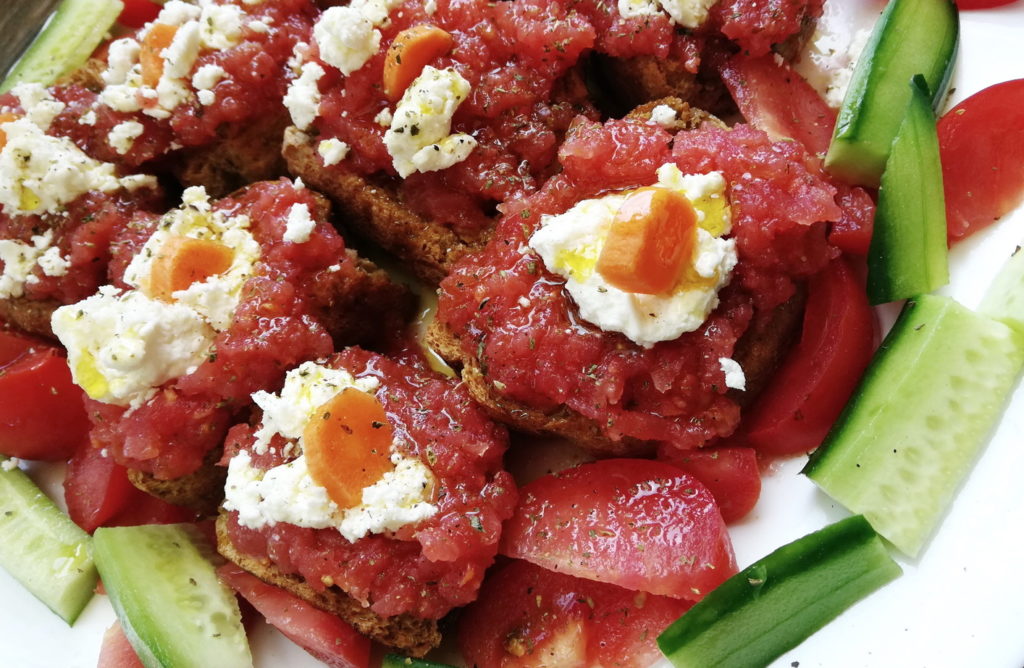
Dakos are like a de-constructed Cretan salad. Grated sweet ripe tomato with extra virgin olive oil and salt top barley rusks. The rusks soften just enough to bite into. Fluffy white “pictogalo,” a Cretan olive, and a shower of wild oregano top each rusk. They are like a super hearty bruschetta. Dakos are the most common appetizer and snack. It’s great with shots of “Raki” – Crete’s ultra-pure version of grappa.
We had the best Dako of our lives at Karnagio, a lovely and playful taverna on the inner harbor of Agios Nikolaos that we found is one of the best restaurants in Crete. Their award-winning hot dako incorporates staka, apaki, and other Cretan specialties.
Lychnarakia
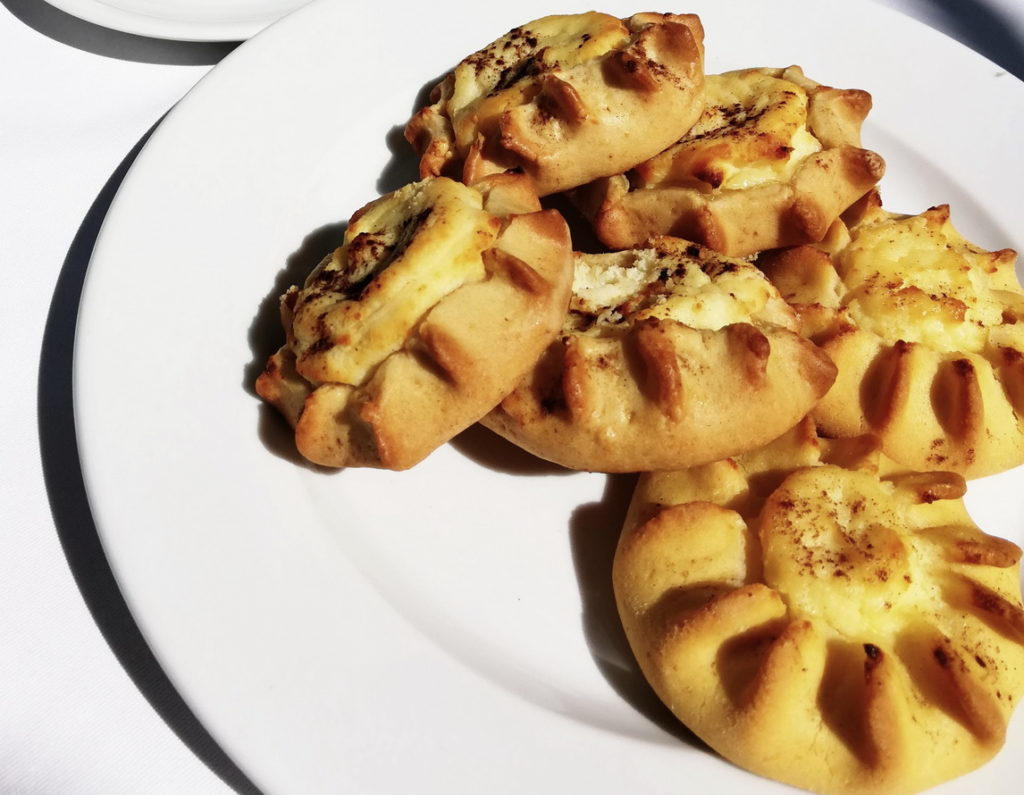
These sweet cheese pies with their crumbly, buttery pastry crust look a tiny bit like the lanterns they take their name from. The rich pichtogalo filling is scented with a dusting of nutmeg or cinnamon.
Sfakianopites
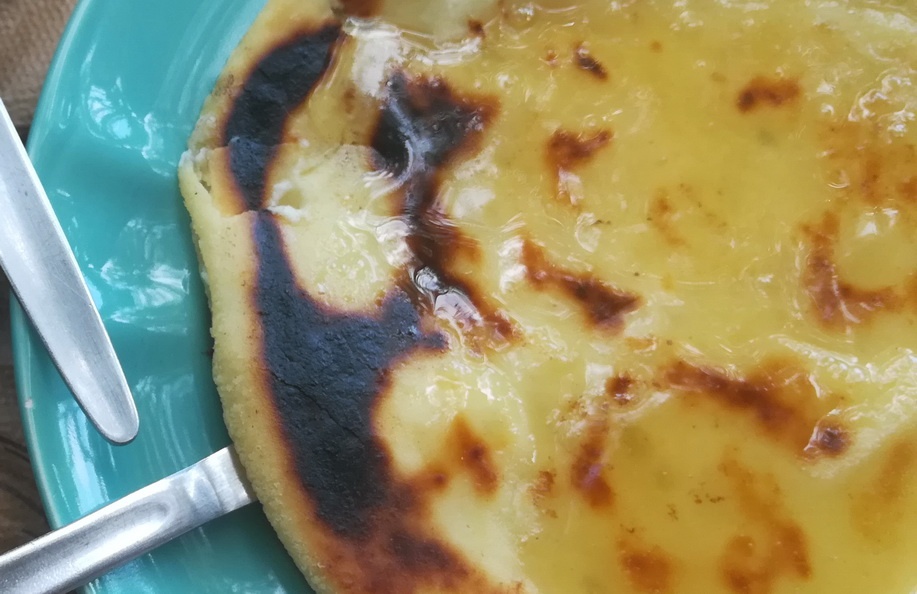
This famous pie from the rugged southern town of Sfakia is a great favorite. A ball of tender dough is filled with a ball of myzithra or pichtogalo, then rolled into a thin and seamless disk. The pie cooks on a dry griddle until blistery. You eat it hot, with honey.
Kalitsounia
As dessert or a meze, these sweet and salty pies always please. A shot of raki is the secret to their tender, shattering dough. Home cooks sometimes us a pasta machine to roll it extra fine. The thin dough is filled with pichtogalo or myzithra, then the pies are fried until golden. Tiny bubbles form under the crust. You eat them with honey.
Marathopites, Hortopites- Cretan Specialty Pies
The rocky and barren-looking landscape of Crete is actually amazingly generous. Although the land appears so dry, the fertile soil nourishes a broad variety of delicious wild greens and herbs. The local greens in general are called “Horta,” and the bright Cretan sun intensifies their flavors.
Wild greens of all kinds make savory pie fillings. A favorite pie filling in Crete is “Maratho” – or wild fennel. This makes a delicious pie, which is a vegan Cretan food specialty.
Boureki
Fresh mint is a natural pairing with creamy pichtogalo. Boureki is a casserole of delicate slices of potato and zucchini, layered with grated tomato, pichtogalo, mint, and then melted butter. Extra cheese, tomato, butter and a little flour form a crust. It sounds so humble, but it often becomes the favorite dish of anyone who has ever visited Crete. Here’s an easy recipe for boureki.
Cochilous Boubouristous- Cretan Snails
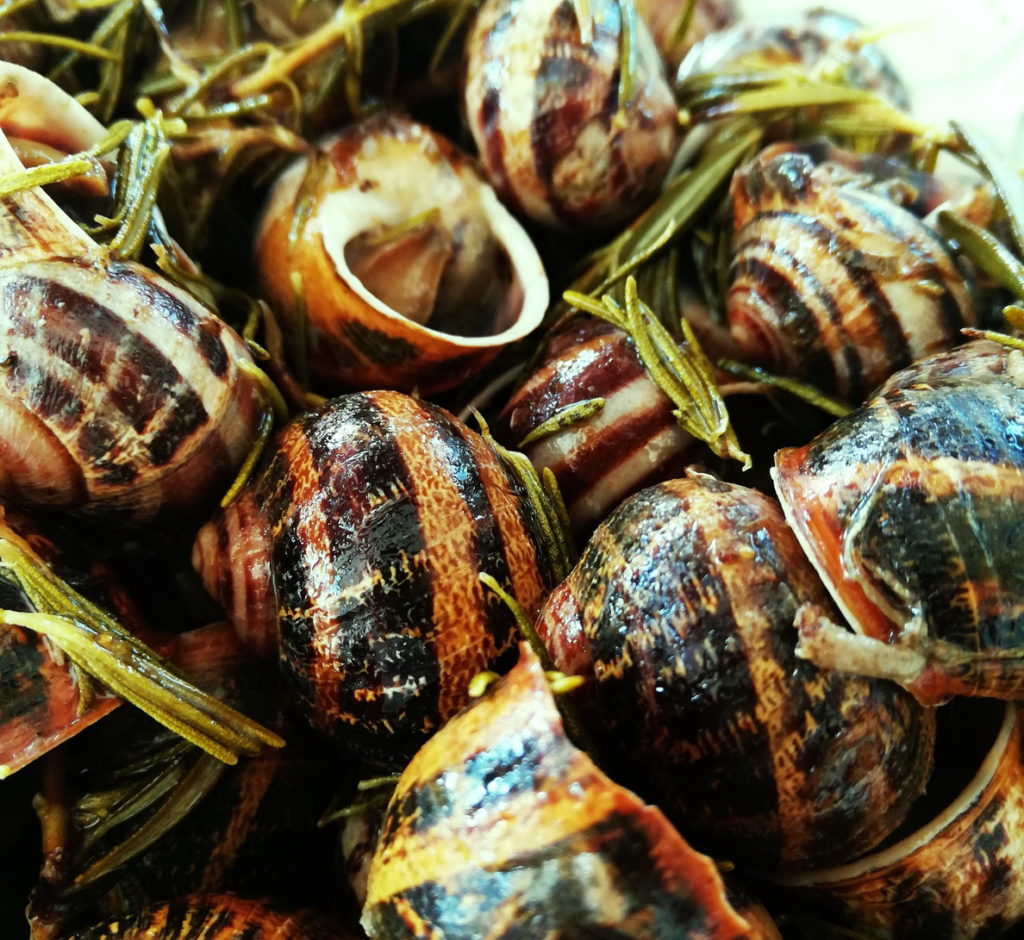
Cretans love snails- called “cochilous.” Just like meat and the milk and cheeses of the goats, the snails are tastier here because of their local diet of wild herbs and greens. It is easy to gather snails in Crete. The favorite preparation of snails is “boubouristou.” The snails are salted and floured, tossed with fresh rosemary, fried until the flour coating the shells turns golden, and then doused in vinegar for plenty of zing. The extremely flavorful preparation is great for first-time snail eaters. These are delicious with a glass of aged Cretan red wine – marouvas.
Apaki
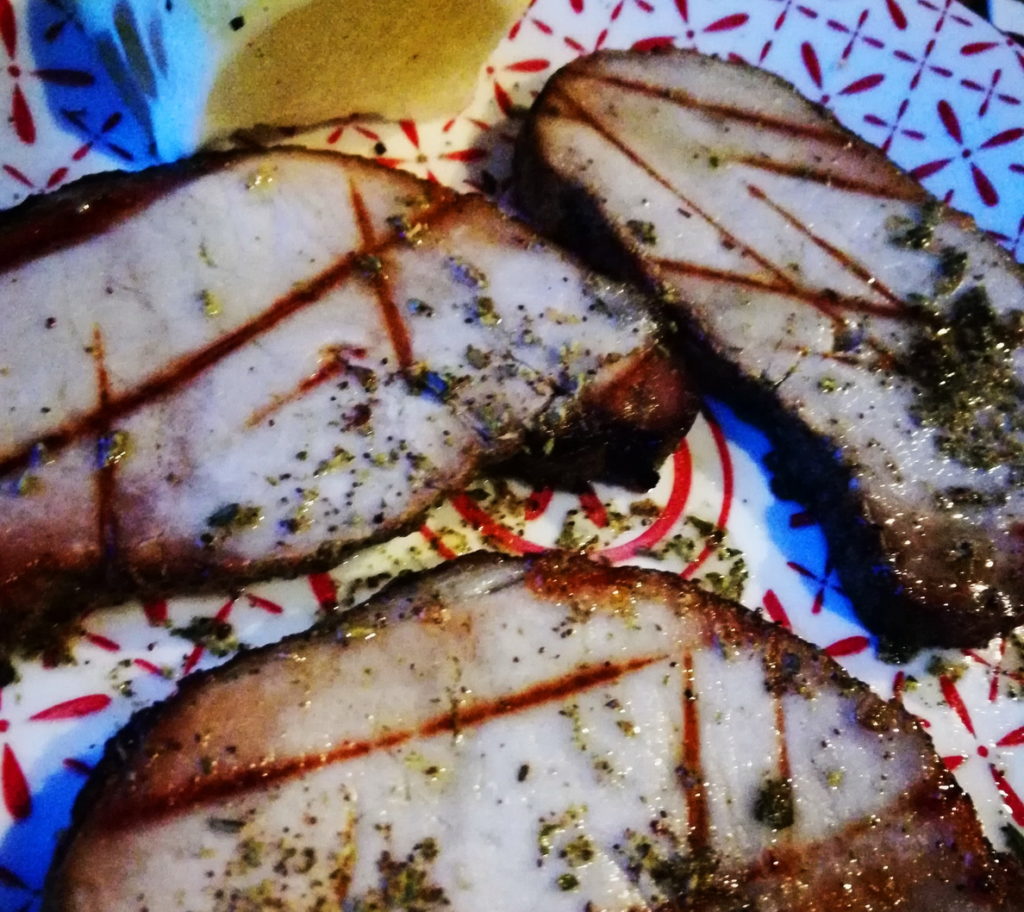
This is a favorite meze. Lean pork fillet is smoked, salted, and gently cured. Cretans eat it warm or cool, as part of a dish, or on its own.
Apaki is an excellent alternative to bacon as it is much leaner and just as flavorful. Also, as with prosciutto, apaki takes well to sweet flavors, and you will often find it in contemporary-style salads with dried figs or other sweet flavors.
Kserotigana
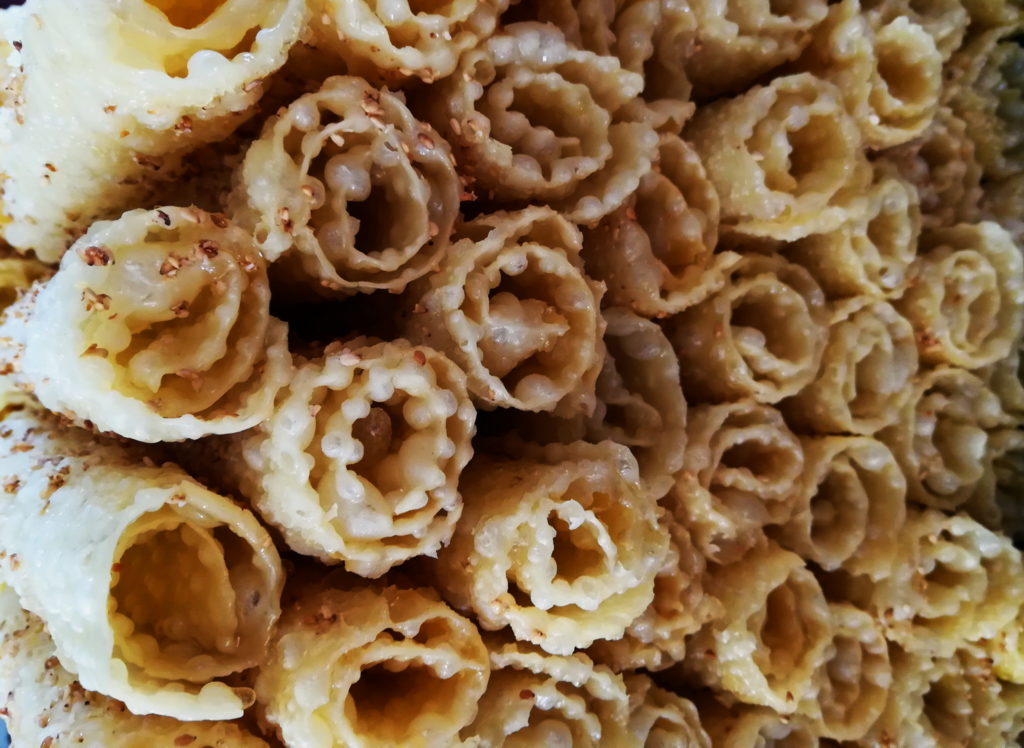
“Ksero” means dry, and a “tigani” is frying pan. Kserotigana are ribbons of ultra-thin dough wrapped into coils and deep fried until crisp and golden. Then they’re dipped in honey syrup and dusted with cinnamon and ground walnuts. Tsicoudia (or raki) – a strong spirit of grape marc – helps the dough stay crisp.
Because they stay fresh for days, and because they are lacy and beautiful and so delicious, this is the traditional dessert at a Cretan wedding banquet.
But how do you make thousands of Kserotigana? You call on the experts. One morning of our Travel Bloggers Greece trip to Lasithi – Crete’s secret, wild and beautiful eastern edge – we had a wonderful invitation. We visited the Women’s cooperative of Ano Zakros. Women’s cooperatives like this maintain culinary heritage by preparing traditional – and often complicated – recipes. If you find yourself in Ano Zakros, stop in for a traditional taste of Crete.
Ano Zakros was on one of the five most dramatic and fabulous driving routes we took on our recent road trip around all of Crete. If you take the same curvy route, you might want to wait until you safely reach your destination before enjoying this final Cretan delight:
“Raki” or “Tsicoudia” – The Essential Spirit of Crete
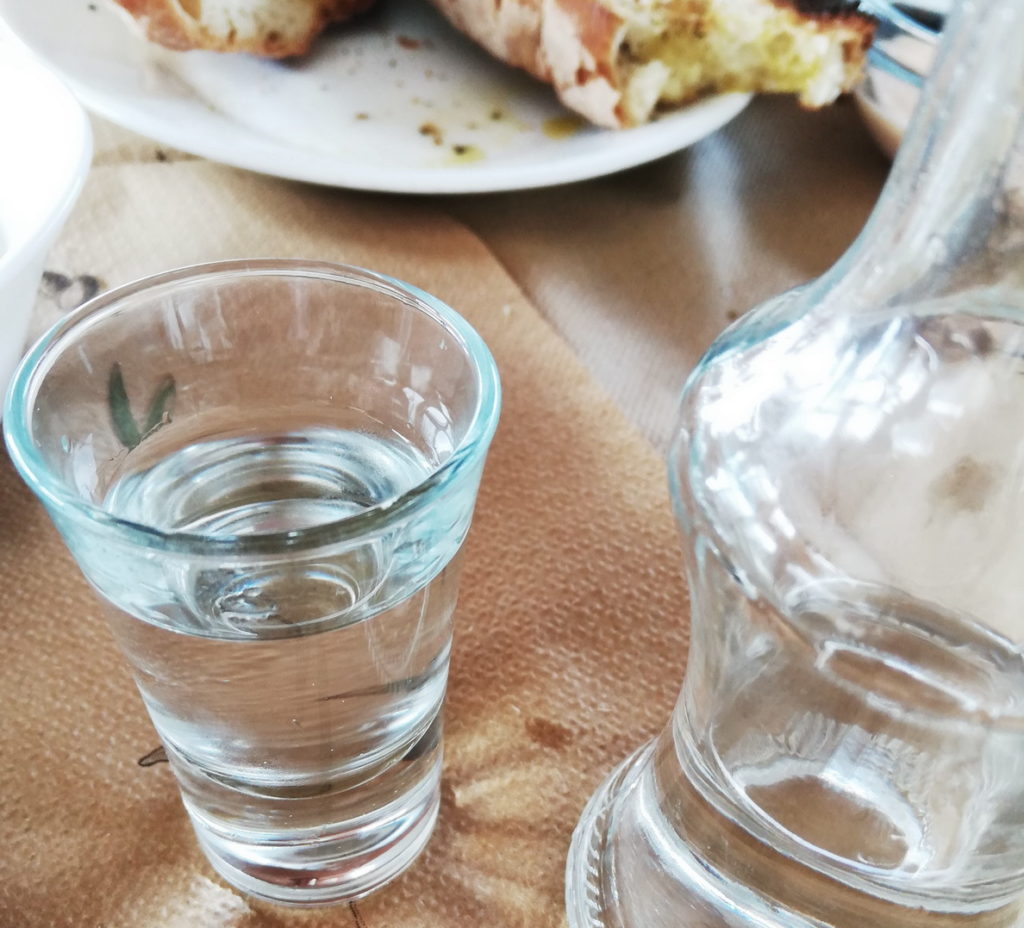
Cretan food specialties have a natural accompaniment. Raki is a cultural essential.
Raki is the distilled spirit of grapes, much like grappa. All over Greece people drink tsipouro, with or without anise. But in Crete they drink raki – a pure version, single distilled and always without additional aromatics. Because of this, the pure taste of the grapes and the earthy soil they grew in comes through in the glass.
In Crete, raki is synonymous with hospitality. And the Cretans are extremely hospitable. Whenever you visit someone – at any time of day – you’ll be offered raki. We even had raki with sweets at 10:30 in the morning at the women’s cooperative.
You can drink raki at any time, anywhere, and with anything. It’s as delicious with snails as it is with graviera cheese smothered in thick thyme honey, or even just a dish of tiny Cretan green olives steeped in lemon juice – “tsakistes.” It’s one of the great Greek drinks.

